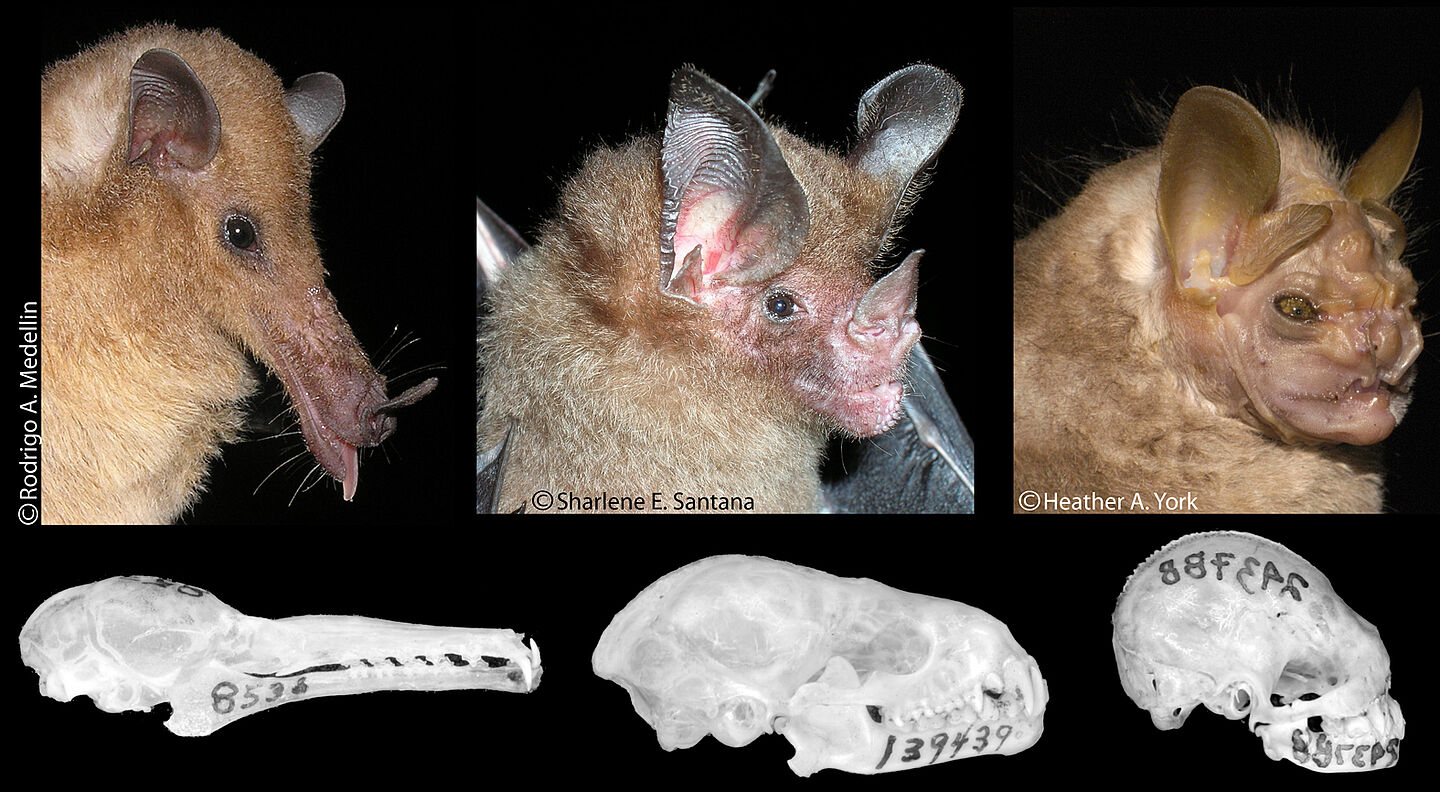One of the biggest puzzles in evolution is why some groups of organisms contain many species while others have only a few. You might expect that groups of the same geological age would have a similar number of species, but that is seldom the case. Among mammals, the New World Leaf-Nosed bats comprise almost 200 species, while their closest relatives include only 10 species despite evolving over the same period of time. Why are there so many species of New World Leaf-Nosed bats?
One of the unique things about these bats is that different species specialize in eating very different foods, including insects, nectar, fruit, frogs, lizards and even blood. Along with these differences in diet, the skulls of different species have very different shapes. Nectar feeders have long, narrow snouts that fit inside bell-shaped flowers, and species that eat hard fruits have very short, pug-like faces. Could it be that the evolution of new skull shapes in the ancestors of these bats allowed them to access new food sources and, in time, give rise to many different species? Evolutionary biologists Dr. Elizabeth Dumont, University of Massachusetts at Amherst, and Dr. Liliana Dávalos, Stony Brook University along with colleagues from the University of California, Los Angeles and Dr Christian Voigt from the Leibniz Institute for Zoo and Wildlife Research in Berlin, Germany tested this idea in a paper published on November 23rd in the Proceedings of the Royal Society.
After measuring hundreds of skulls, testing bite force in hundreds of wild bats, examining faeces from thousands of bats to figure out what they ate, and analyzing an evolutionary tree of more than 150 species, they traced the single biggest jump in the rise of new species to the evolution of a new skull shape. This new shape was a low, broad skull that allowed even small bats to produce the strong bites needed to eat hard fruits. As soon as this new skull shape evolved, about 15 million years ago, many new species evolved rapidly and they included fruits from more and more plants in their diets. These findings offer a clear example of how the evolution of new traits - in this case a skull with a new shape - allowed animals to use new resources, and ultimately resulted in the rapid evolution of many new species.
Publication:
The Royal Society Press / Proceedings of the Royal Society B: Biological Sciences
Information & Photos:
Leibniz Institute for Zoo and Wildlife Research (IZW) in the Forschungsverbund Berlin e.V.
Alfred-Kowalke-Str. 17
10315 Berlin
Germany
www.izw-berlin.de
Dr. Christian Voigt, 0049 30 51 68 517, voigtizw-berlin.de
Steven Seet, 0049 30 5168 108, seetizw-berlin.de


